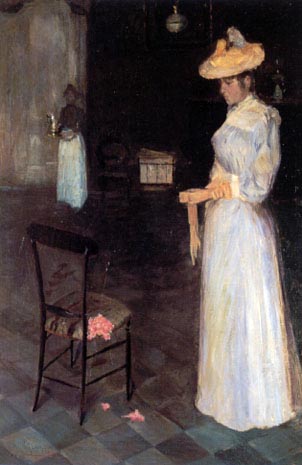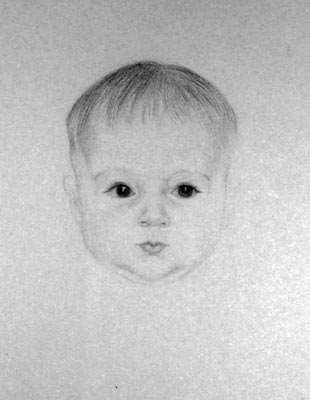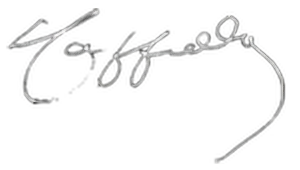Portraits
Cappiello was passionate about painting from an early age. He taught himself, without a teacher. In his early years, he was influenced by the Macchiaioli painters he met.
His first known paintings date from 1886. He was just 11 years old.
These include a number of landscapes and, above all, portraits, often in a landscape setting or interior décor (see table opposite).
He soon developed a predilection for portraiture and its more synthetic form, caricature. He practiced this genre for around 8 years. From 1904, he stopped doing caricatures. But many famous people continued to ask him to paint their portraits, particularly between 1905 and 1920.
Although many of them are marvelous, they are little known because they were rarely exhibited and are kept in families. What’s more, they’ve certainly been drowned out by the exceptional ensemble of Cappiello’s caricatures and posters.

Woman in an interior (1891)
Museo Civico Govanni Fattori - Livorno

Françoise Cappiello at 4 months (1902)
In addition to his self-portraits and portraits of his wife and children, other examples include portraits of his sister-in-law Jeanne Mühlfeld, his brother-in-law Paul Adam, Puccini, Madame Jean Stern and Princess Magda Achille Murat disguised as a Thai dancer.
In his portraits, Cappiello seeks not only plastic, but also psychological resemblance with scrupulous accuracy. His art proceeds by simplification. He says: “In a face, there are a few features to capture and preserve, and all the others must disappear. The whole work of reflection consists in isolating them”.
Cappiello’s mastery of line is enough to express who the model is. He no longer needs to present them in their familiar world to give them life, as he did in his early paintings. Here we find the qualities of the caricaturist, but also those of the poster artist: he creates life through movement.
The portrait of Henri de Régnier, painted in 1909, is particularly interesting from this point of view. G. Apollinaire, in an article published in L’Intransigeant on April 3, 1910, writes:
“Room III ter. Leonetto Cappiello exhibits a closely resembling portrait of Henri de Régnier… His face, with its drooping moustache, has that disdainful, dreamy expression that gives those who recognize the author of the ‘Winged Sandal’ the impression that, while his body is present, his mind is elsewhere.”
Another example is “The Young Spanish Woman” below. Although her hands on her hips keep her in place, her lively gaze draws us to the left of the canvas.
For all the qualities of his paintings, it was above all through caricature, and then posters, that Cappiello imposed his innovative art.

Henri de Régnier (1910)
Musée d'Orsay- Paris

Spanish Woman (1917)
